Related Research Articles

Ghana, officially the Republic of Ghana, is a country in West Africa. It spans the Gulf of Guinea and the Atlantic Ocean to the south, sharing borders with the Ivory Coast in the west, Burkina Faso in the north, and Togo in the east. Ghana covers an area of 238,535 km2 (92,099 sq mi), spanning diverse biomes that range from coastal savannas to tropical rain forests. With over 31 million people, Ghana is the second-most populous country in West Africa, after Nigeria. The capital and largest city is Accra; other major cities are Kumasi, Tamale, and Sekondi-Takoradi.

The Demography of Ghana describes the condition and overview of Ghana's population. This article is about the demographic features of the population of Ghana, including population density, ethnicity, education level, health of the populace, religious affiliations, and other aspects of the population.

The United States Census Bureau (USCB), officially the Bureau of the Census, is a principal agency of the U.S. Federal Statistical System, responsible for producing data about the American people and economy. The Census Bureau is part of the U.S. Department of Commerce and its director is appointed by the President of the United States.

The Regions of Ghana constitute the first level of subnational government administration within the Republic of Ghana. As of 2020, there are currently sixteen regions, which are further divided for administrative purposes into 260 local metropolitan, municipal and district assemblies.
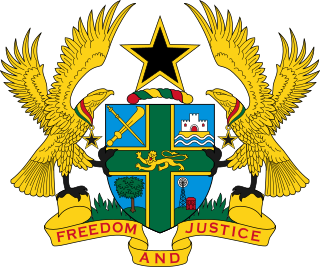
The Districts of Ghana are second-level administrative subdivisions of Ghana, below the level of region. There are 261 local metropolitan, municipal and district assemblies.

Islam is one of the major religions practiced widely in Ghana. Its presence in Ghana dates back to the 10th century. According to the Ghana Statistical Service's Population and Housing census, the population of Muslims in Ghana is about 17.6%.
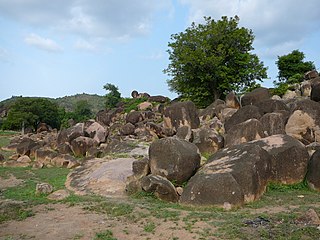
The Upper East Region is located in north Ghana and is the third smallest of the 16 administrative regions in Ghana. It occupies a total land surface of 8,842 square kilometers or 2.7 per cent of the total land area of Ghana. The Upper East regional capital is Bolgatanga, sometimes referred to as Bolga. Other major towns in the region include Navrongo, Paga, Bawku and Zebilla.
Tennessee is the sixteenth most populous state in the United States, and has the twentieth-highest population density. The 2020 United States census reported its population to be 6,916,897.

In precolonial Ghana, infectious diseases were the main cause of morbidity and mortality. The modern history of health in Ghana was heavily influenced by international actors such as Christian missionaries, European colonists, the World Bank, and the International Monetary Fund. In addition, the democratic shift in Ghana spurred healthcare reforms in an attempt to address the presence of infectious and noncommunicable diseases eventually resulting in the formation of the National Health insurance Scheme in place today.

A census of the population of the United Kingdom is taken every ten years. The 2011 census was held in all countries of the UK on 27 March 2011. It was the first UK census which could be completed online via the Internet. The Office for National Statistics (ONS) is responsible for the census in England and Wales, the General Register Office for Scotland (GROS) is responsible for the census in Scotland, and the Northern Ireland Statistics and Research Agency (NISRA) is responsible for the census in Northern Ireland.
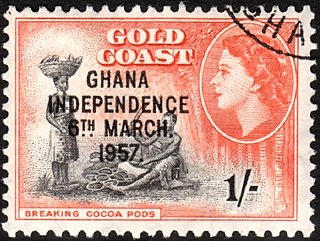
Ghana gained independence from the British on 6 March 1957. It is a member of the Commonwealth of Nations. The country became a republic on July 1, 1960.
The Ghanaian people are a nation originating in the Ghanaian Gold Coast. Ghanaians predominantly inhabit the republic of Ghana, and are the predominant cultural group and residents of Ghana, numbering 20 million people as of 2013. Native Ghanaians make up 85.4 per cent of the total population. The word "Ghana" means "warrior king".
Irreligion in Ghana is difficult to measure in the country, as regular demographic polling is not widespread and available statistics are often many years old. Most Ghanaian nationals claim the Christian(71%) or Muslim(18%) faiths. Many atheists in Ghana are not willing to openly express their beliefs due to the fear of persecution. Most secondary educational institutions also have some form of religious affiliation. This is evident in the names of schools like Presbyterian Boys School, Holy Child School and many others. Atheists form a very small minority in Ghana.
Grace Afua Bediako is a Ghanaian statistician and the former head of the Ghana Statistical Service. She is currently a member of the National Development Planning Commission (NDPC).
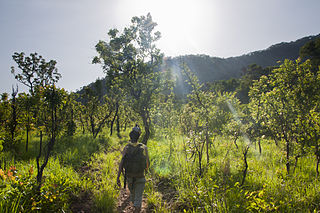
The Oti Region is one of the six regions created regions of Ghana in December 2018. The region was carved out of the northern part of the Volta Region and will be in fulfillment of a campaign promise made by New Patriotic Party. Prior to the 2016 Ghanaian general election, the then candidate Nana Akufo-Addo declared that when elected, he would explore the possibility of creating new regions out of some of the existing regions in Ghana in order to bring government closer to citizens.
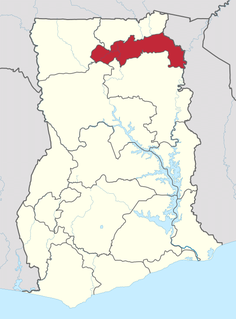
The North East Region is one of the sixteen regions of Ghana. It is located in the north of the country and was created in December 2018 after a referendum was voted upon to break it off of the Northern region. The region's capital is Nalerigu.
The Ghana Statistical Service (GSS) is a Ghanaian governing body established to report to the presidency. The GSS conducts Population and Housing Census in the country.

Education inequality in Ghana exists in multiple dimensions, with significant disparities occurring along gender, wealth, and geographical divides. Improvements have been made by both government and civic organizations.
Maxwell Opoku-Afari is a Ghanaian economist and currently the First Deputy Governor of the Bank of Ghana. He was appointed to this position on August 7, 2017.
References
- ↑ "Ghana: Regions, Major Cities & Urban Localities - Population Statistics, Maps, Charts, Weather and Web Information". www.citypopulation.de. Retrieved 2021-11-22.
- ↑ "2010 Population and Housing Census: Demographic, Social, Economic and Housing Characteristics Report" (PDF). Ghana Statistical Service. Page 10, Table 3. Archived from the original (PDF) on 2019-03-03. Retrieved 2015-10-28.
- 1 2 3 4 "2000 Population and Housing Census Data Analysis Report Volume 1". Ghana Statistical Service. Page 117, Table 7.5. Archived from the original on 2019-03-29. Retrieved 2015-10-28.
- ↑ "Greater Accra - Government of Ghana". www.ghana.gov.gh. Retrieved 2019-01-29.
- ↑ "Ashanti - Government of Ghana". www.ghana.gov.gh. Retrieved 2019-01-29.
- ↑ "Eastern Region - Government of Ghana". www.ghana.gov.gh. Retrieved 2019-01-29.
- ↑ "Central - Government of Ghana". www.ghana.gov.gh. Retrieved 2019-01-29.
- ↑ "Northern - Government of Ghana". www.ghana.gov.gh. Retrieved 2019-01-29.
- ↑ "Western - Government of Ghana". www.ghana.gov.gh. Retrieved 2019-01-29.
- ↑ "Volta - Government of Ghana". www.ghana.gov.gh. Retrieved 2019-01-29.
- ↑ "Upper East - Government of Ghana". www.ghana.gov.gh. Retrieved 2019-01-29.
- ↑ "Brong Ahafo - Government of Ghana". www.ghana.gov.gh. Retrieved 2019-01-29.
- ↑ "Upper West - Government of Ghana". www.ghana.gov.gh. Retrieved 2019-01-29.